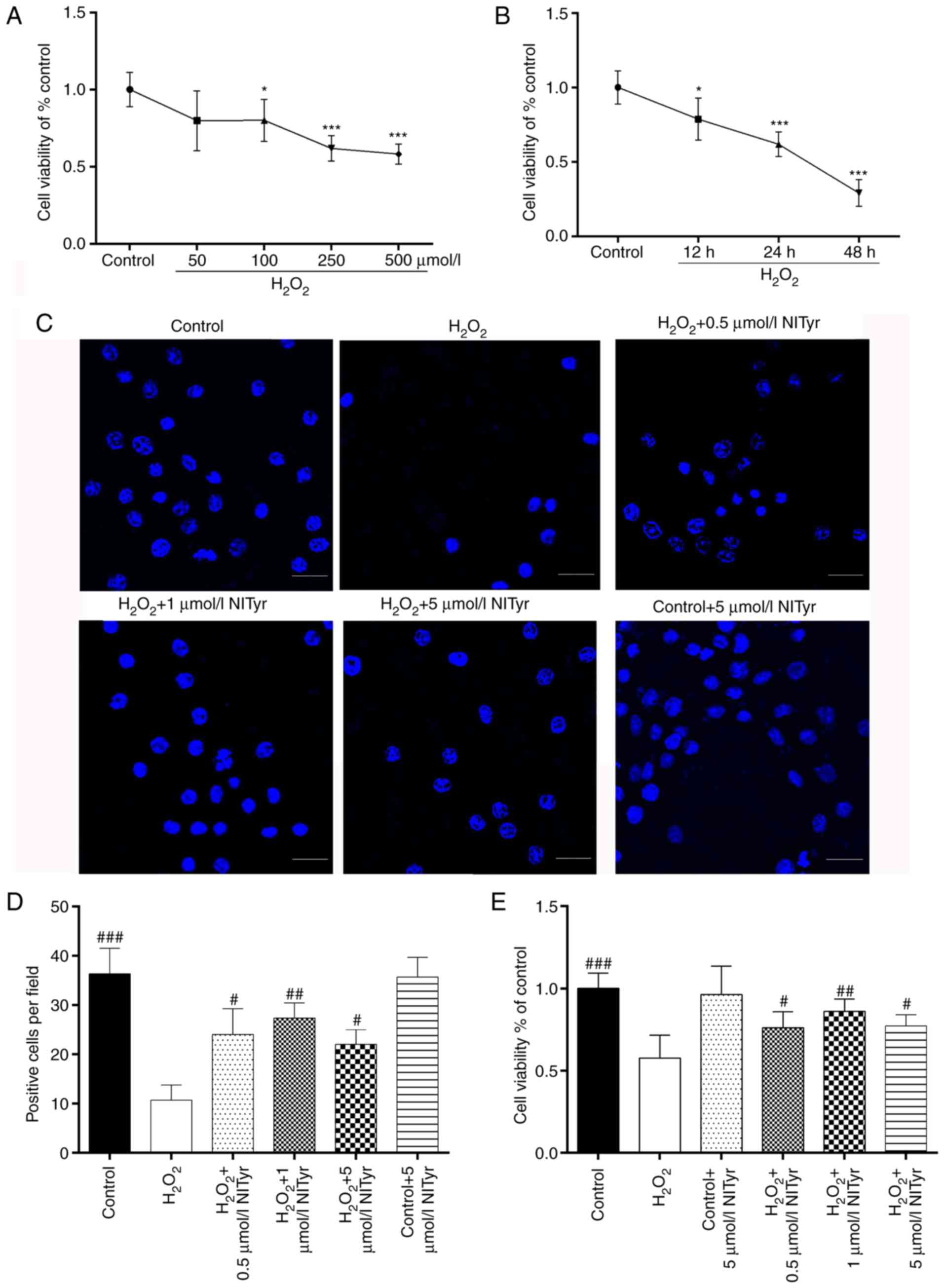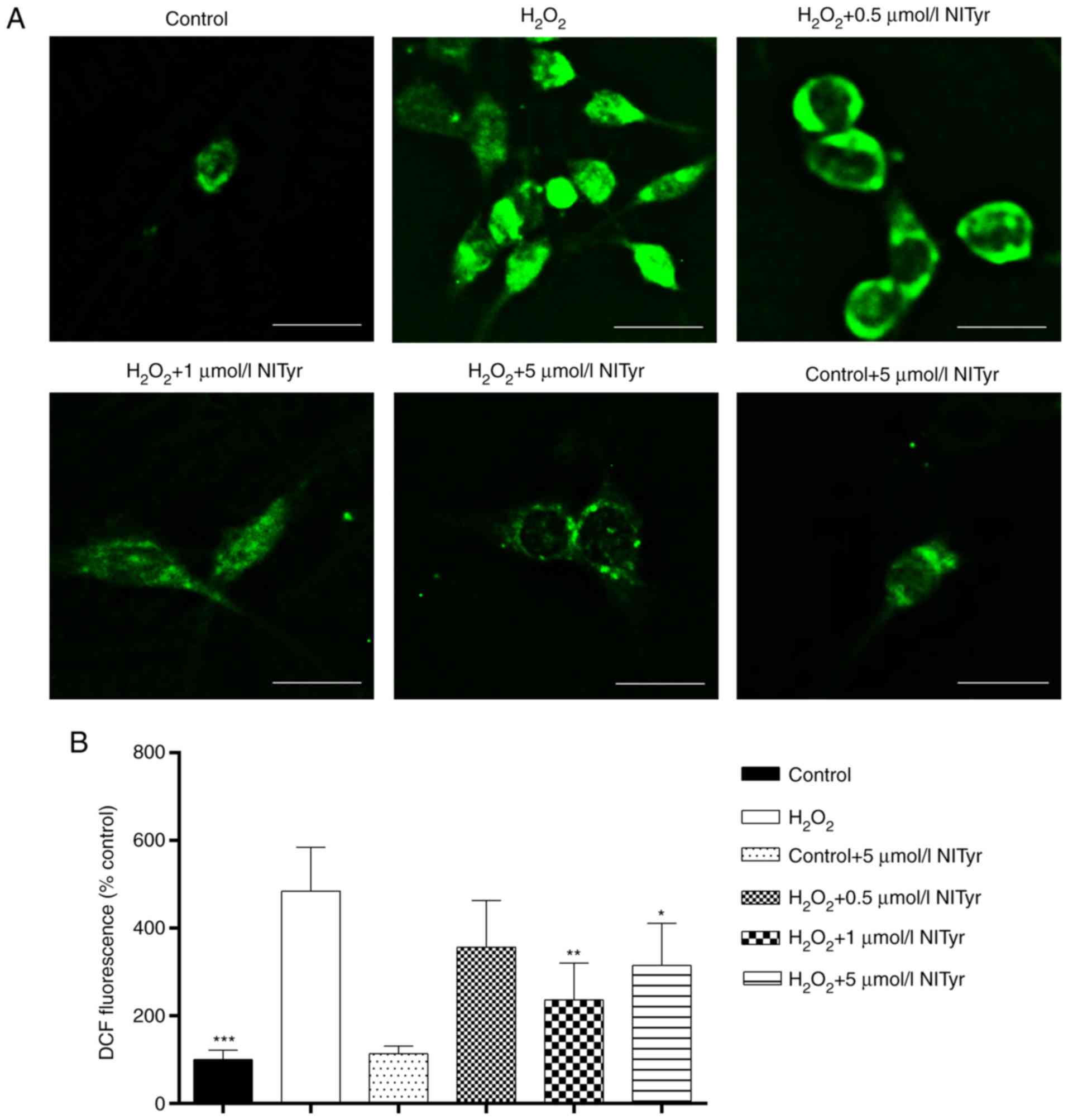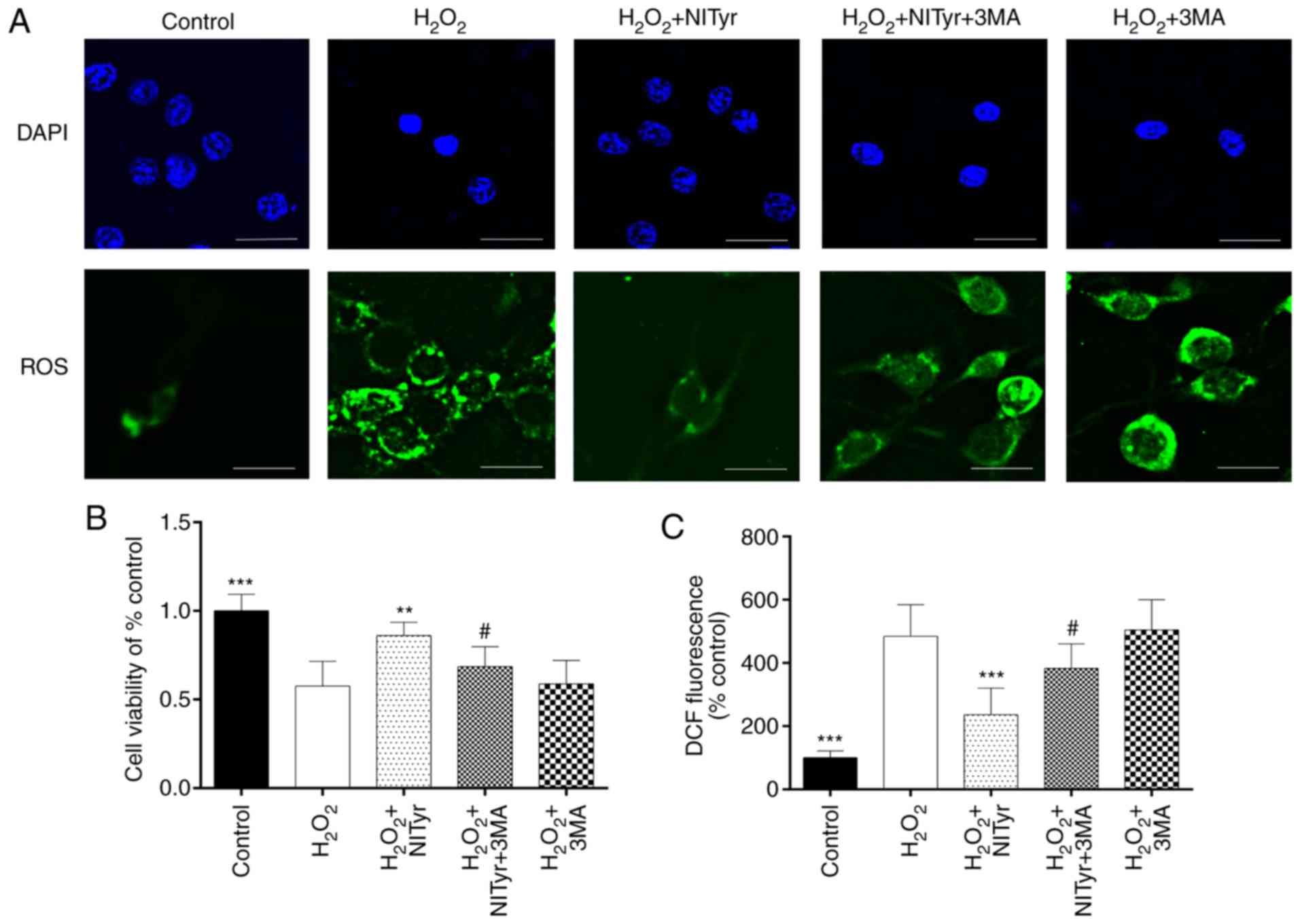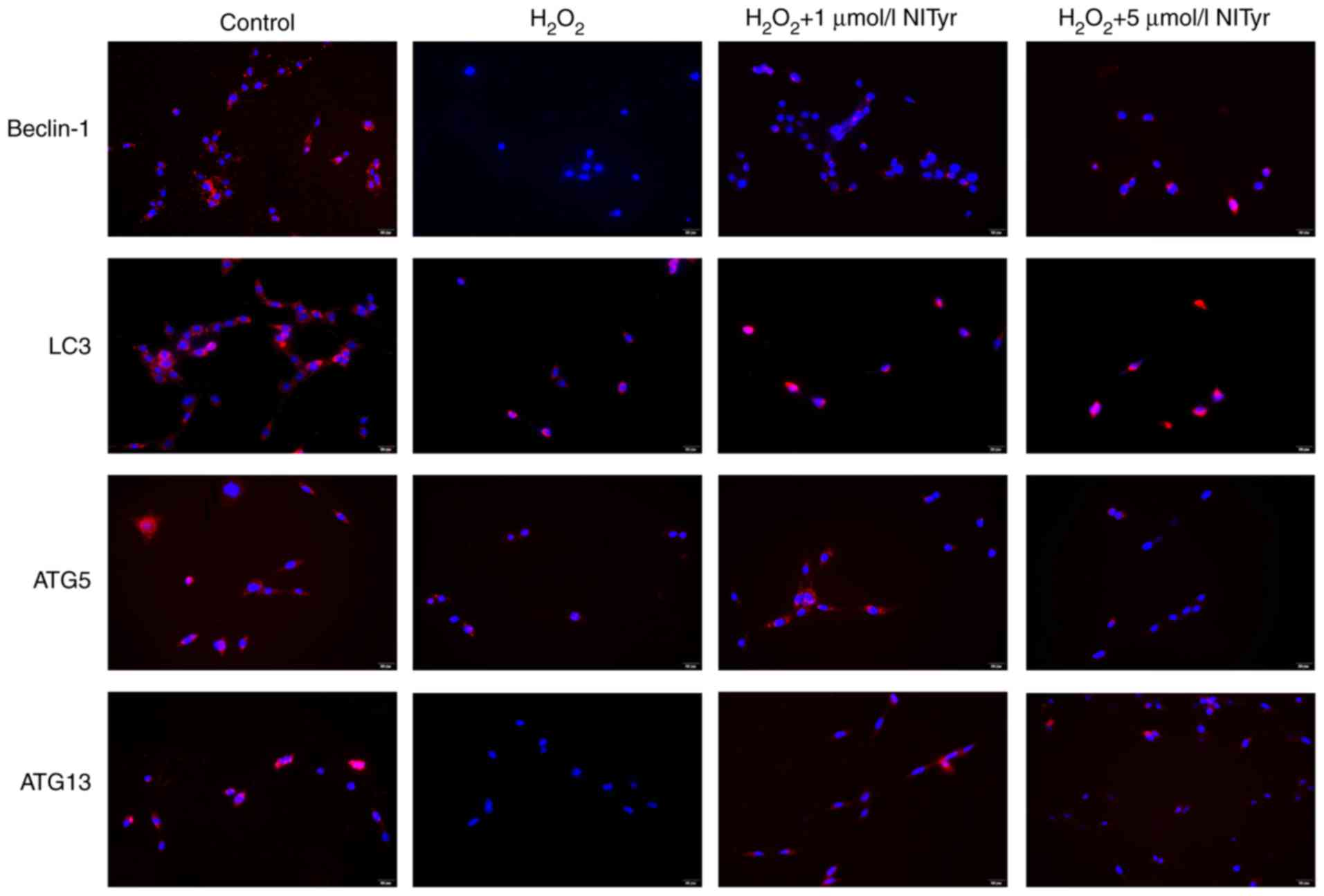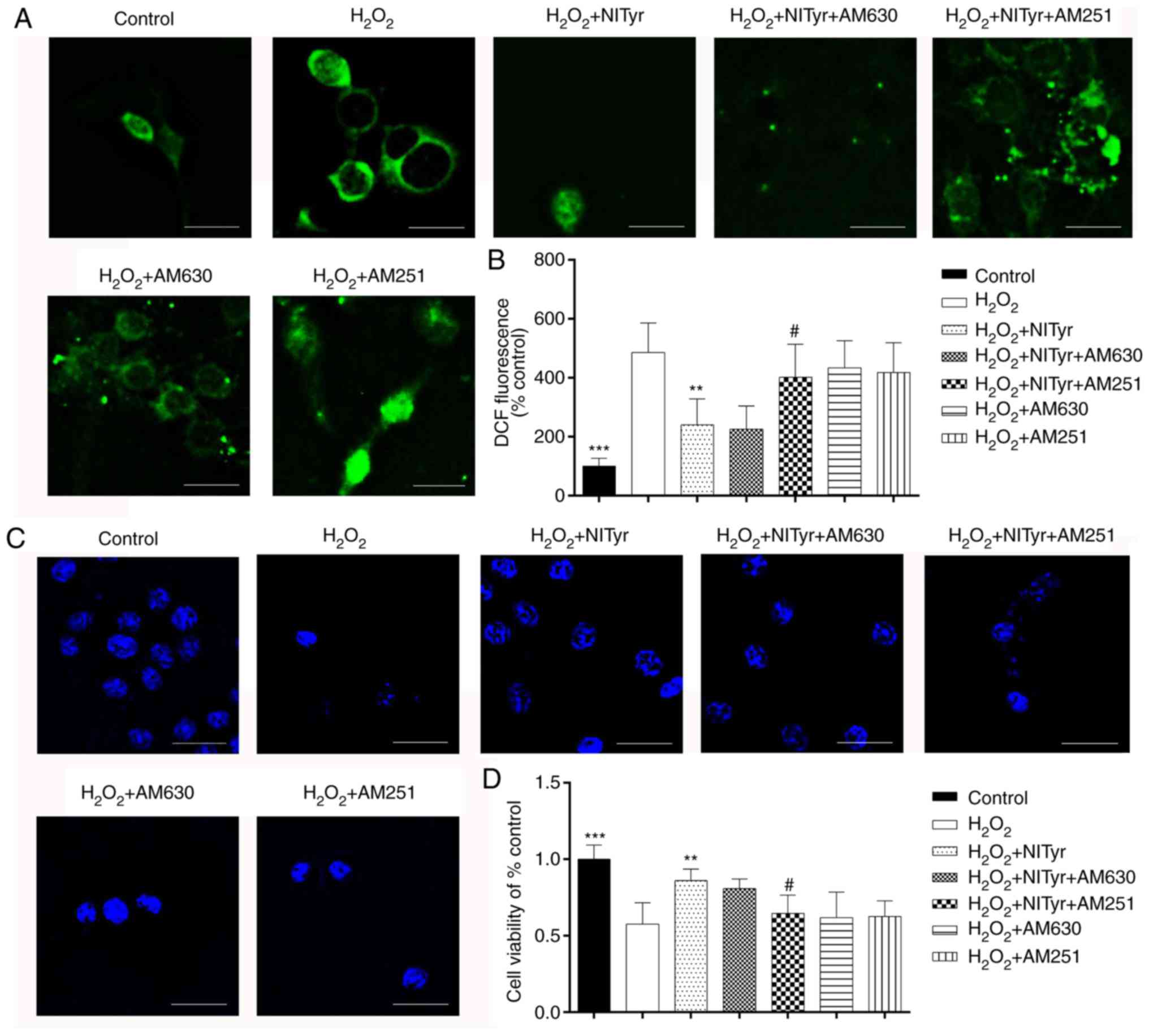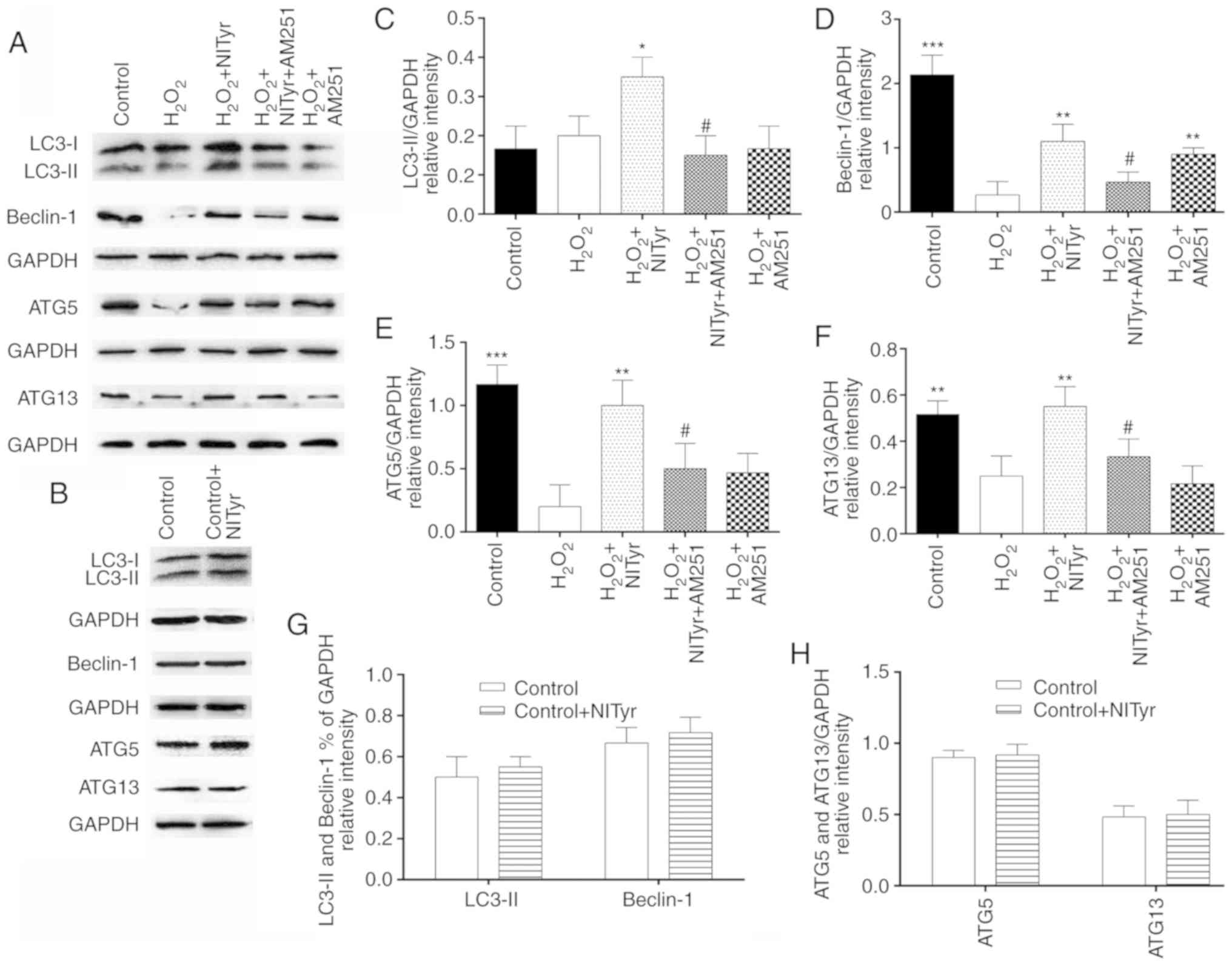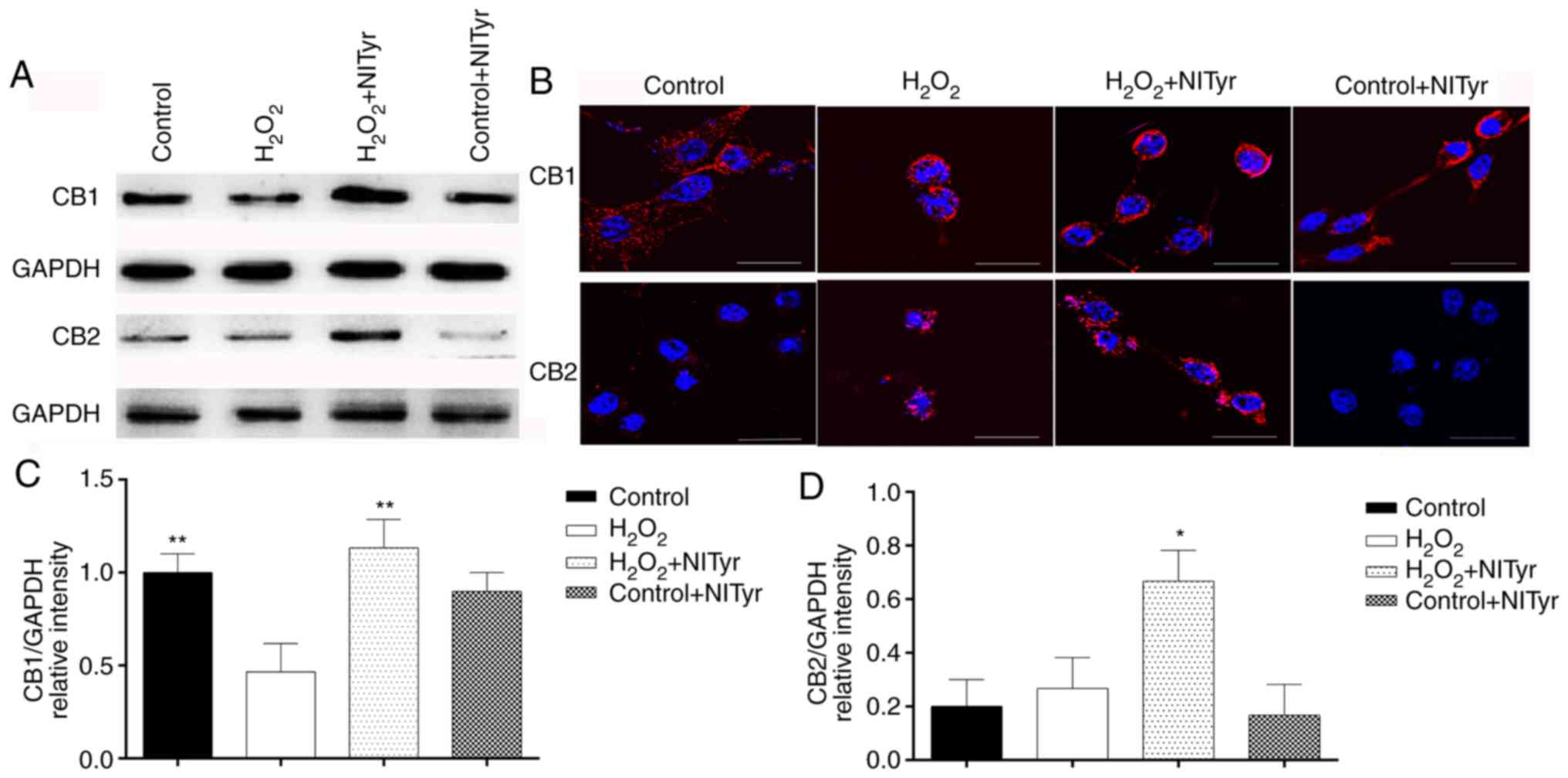|
1
|
Sies H: Oxidative stress: A concept in
redox biology and medicine. Redox Biol. 4:180–183. 2015. View Article : Google Scholar : PubMed/NCBI
|
|
2
|
Tönnies E and Trushina E: Oxidative
stress, synaptic dysfunction, and Alzheimer's disease. J Alzheimers
Dis. 57:1105–1121. 2017. View Article : Google Scholar
|
|
3
|
Salim S: Oxidative stress and the central
nervous system. J Pharmacol Exp Ther. 360:201–205. 2017. View Article : Google Scholar :
|
|
4
|
Ravanan P, Srikumar IF and Talwar P:
Autophagy: The spotlight for cellular stress responses. Life Sci.
188:53–67. 2017. View Article : Google Scholar : PubMed/NCBI
|
|
5
|
De Munck D, De Meyer DR and Martinet W:
Autophagy as an emerging therapeutic target for age-related
vascular pathologies. Expert Opin Ther Targets. 24:131–145. 2020.
View Article : Google Scholar : PubMed/NCBI
|
|
6
|
Filomeni G, De Zio D and Cecconi F:
Oxidative stress and autophagy: The clash between damage and
metabolic needs. Cell Death Differ. 22:377–388. 2015. View Article : Google Scholar :
|
|
7
|
Fang C, Gu L, Smerin D, Mao S and Xiong X:
Interrelation between reactive oxygen species and autophagy in
neurological disorders. Oxi Med Cell Longev. 2017:84951602017.
|
|
8
|
Martín Giménez VM, Noriega SE, Kassuha DE,
Fuentes LB and Manucha W: Anandamide and endocannabinoid system: An
attractive therapeutic approach for cardiovascular disease. Ther
Adv Cardiovasc Dis. 12:177–190. 2018. View Article : Google Scholar : PubMed/NCBI
|
|
9
|
Hu Y, Tao Y and Hu J: Cannabinoid receptor
2 deletion deteriorates myocardial infarction through the
down-regulation of AMPK-Mtor-p70S6K signaling-mediated autophagy.
Biosci Rep. 39:BSR201806502019. View Article : Google Scholar : PubMed/NCBI
|
|
10
|
Wu A, Hu P, Lin J, Xia W and Zhang R:
Activating cannabinoid receptor 2 protects against diabetic
cardiomyopathy through autophagy induction. Front Pharmacol.
9:12922018. View Article : Google Scholar : PubMed/NCBI
|
|
11
|
Wu Q, Zhang M, Liu X, Zhang J and Wang H:
CB2R orchestrates neuronal autophagy through regulation of the mtor
signaling pathway in the hippocampus of developing rats with status
epilepticus. Int J Mol Med. 45:475–484. 2020.PubMed/NCBI
|
|
12
|
Willoughby KA, Moore SF, Martin BR and
Ellis EF: The biodis-position and metabolism of anandamide in mice.
J Pharmacol Exp Ther. 282:243–247. 1997.PubMed/NCBI
|
|
13
|
Cheng L, Li J, Zhou Y, Zheng Q, Ming X and
Liu S: N-linoleyltyrosine protects against transient cerebral
ischemia in gerbil via CB2 receptor involvement in PI3K/Akt
signaling pathway. Biol Pharm Bull. 42:1867–1876. 2019. View Article : Google Scholar : PubMed/NCBI
|
|
14
|
Hu Y, Zhou KY, Wang ZJ, Lu Y and Yin M:
N-stearoyl-l-tyrosine inhibits the cell senescence and apoptosis
induced by H2O2 in HEK293/Tau cells via the CB2 receptor. Chem Biol
Interact. 272:135–144. 2017. View Article : Google Scholar : PubMed/NCBI
|
|
15
|
Dyall SC, Mandhair HK, Fincham RE, Kerr
DM, Roche M and Molina-Holgado F: Distinctive effects of
eicosapentaenoic and docosahexaenoic acids in regulating neural
stem cell fate are mediated via endocannabinoid signaling pathways.
Neuropharmacology. 107:387–395. 2016. View Article : Google Scholar : PubMed/NCBI
|
|
16
|
Guo Z, Yuan Y, Guo Y, Wang H, Song C and
Huang M: Nischarin attenuates apoptosis induced by oxidative stress
in PC12 cells. Exp Ther Med. 17:663–670. 2019.PubMed/NCBI
|
|
17
|
Maccarrone M: Metabolism of the
endocannabinoid anan-damide: Open questions after 25 years. Front
Mol Neurosci. 29:1662017. View Article : Google Scholar
|
|
18
|
Zhang YB, Kan MY, Yang ZH, Ding WL, Yi J,
Chen HZ and Lu Y: Neuroprotective effects of N-steroyltyrosine on
transient global cerebral ischemia in gerbils. Brain Res.
1287:146–156. 2009. View Article : Google Scholar : PubMed/NCBI
|
|
19
|
Tang SQ, Yin S, Liu S, Le KJ, Yang RL, Liu
JH, Wang XL, Zheng ZX, Zheng L, Lin Q and Lu Y: N-stearoyltyrosine
dipotassium ameliorates high-fat diet-induced obesity in C57BL/6
mice. Eur J Pharm Sci. 74:18–26. 2015. View Article : Google Scholar : PubMed/NCBI
|
|
20
|
Liu S, Tang SQ, Cui HJ, Yin S, Yin M, Zhao
H, Meng LH, Wang ZJ and Lu Y: Dipotassium N-stearoyltyrosinate
ameliorated pathological injuries in triple-transgenic mouse model
of Alzheimer's disease. J Pharmacol Sci. 132:92–99. 2016.
View Article : Google Scholar : PubMed/NCBI
|
|
21
|
Yao LY, Lin Q, Niu YY, Deng KM, Zhang JH
and Lu Y: Synthesis of Lipoamino acids and their activity against
cerebral ischemia injury. Molecules. 14:4051–4064. 2009. View Article : Google Scholar : PubMed/NCBI
|
|
22
|
Singh A, Kukreti R, Saso L and Kukreti S:
Oxidative stress: A key modulator in neurodegenerative diseases.
Molecules. 22:15832019. View Article : Google Scholar
|
|
23
|
Chen L, Wu X, Shen T, Wang X, Wang S, Wang
J and Ren D: Protective effects of ethyl gallate on H2O2-induced
mitochondrial dysfunction in PC12 cells. Metab Brain Dis.
34:545–555. 2019. View Article : Google Scholar : PubMed/NCBI
|
|
24
|
Jia J, Ma L, Wu MC, Zhang L, Zhang X, Zhai
Q, Jiang Q, Wang Q and Xiong L: Anandamide protects HT22 cells
exposed to hydrogen peroxide by inhibiting cb1 receptor-mediated
type 2 NADPH oxidase. Oxid Med Cell Longev. 2014:8935162014.
View Article : Google Scholar : PubMed/NCBI
|
|
25
|
Wang ZH, Liu JL, Wu L, Yu Z and Yang HT:
Concentration-dependent wrestling between detrimental and
protective effects of H2O2 during myocardial ischemia/reperfusion.
Cell Death Dis. 5:e12972014. View Article : Google Scholar : PubMed/NCBI
|
|
26
|
Martin D, Salinas M, Fujita N, Tsuruo T
and Cuadrado A: Ceramide and reactive oxygen species generated by
H2O2 induce caspase-3-independent degradation of Akt/protein kinase
B. J Biol Chem. 277:42943–42952. 2002. View Article : Google Scholar : PubMed/NCBI
|
|
27
|
Denton D and Kumar S: Autophagy-dependent
cell death. Cell Death Differ. 26:605–616. 2019. View Article : Google Scholar :
|
|
28
|
Kaushal GP, Chandrashekar K and Juncos LA:
Molecular interactions between reactive oxygen species and
autophagy in kidney disease. Int J Mol Sci. 20:37912019. View Article : Google Scholar :
|
|
29
|
Wang H, Gao N, Li Z, Yang Z and Zhang T:
Autophagy alleviates melamine-induced cell death in PC12 cells via
decreasing ROS levels. Mol Neurobiol. 53:1718–1729. 2016.
View Article : Google Scholar
|
|
30
|
Cao S, Li S, Li Q, Zhang F, Sun M, Wan Z
and Wang S: Protective effects of salvianolic acid B against
hydrogen peroxide-induced apoptosis of human umbilical vein
endothelial cells and underlying mechanisms. Int J Mol Med.
44:457–468. 2020.
|
|
31
|
Cao Y, Chen J, Ren G, Zhang Y, Tan X and
Yang L: Punicalagin prevents inflammation in LPS-induced RAW264.7
macrophages by inhibiting Fox3a/Autophagy signaling pathway.
Nutrients. 11:27942019. View Article : Google Scholar
|
|
32
|
Kang R, Zeh HJ, Lotze MT and Tang D: The
beclin 1 network regulates autophagy and apoptosis. Cell Death
Differ. 18:571–580. 2011. View Article : Google Scholar : PubMed/NCBI
|
|
33
|
Alers S, Wesselborg S and Stork B: ATG13:
Just a companion, or an executor of the autophagic program?
Autophagy. 10:944–956. 2014. View Article : Google Scholar : PubMed/NCBI
|
|
34
|
Arakawa S, Honda S, Yamaguchi H and
Shimizu S: Molecular mechanisms and physiological roles of
Atg5/Atg7-independent alternative autophagy. Proc Jpn Acad Ser B
Phys Biol Sci. 93:378–385. 2017. View Article : Google Scholar : PubMed/NCBI
|
|
35
|
Moreira-Silva D, Carrettiero DC, Oliveira
AS, Rodrigues S, Dos Santos-Lopes J, Canas PM, Cunha PA, Almeida MC
and Ferreira TL: Anandamide effects in a streptozotocin-induced
Alzheimer's disease-like sporadic dementia in rats. Front Neurosci.
12:6532018. View Article : Google Scholar : PubMed/NCBI
|
|
36
|
Marsicano G, Moosmann B, Hermann H, Lutz B
and Behl C: Neuroprotective properties of cannabinoids against
oxidative stress: Role of the cannabinoid receptor CB1. J
Neurochem. 80:448–456. 2002. View Article : Google Scholar : PubMed/NCBI
|
|
37
|
Parlar A, Arslan SQ, Doğan MF, Çam SA,
Yalçin A, Elibol E, Özer MK, Üçkardeş F and Kara H: The exogenous
administration of CB2 specific agonist, GW405833, inhibits
inflammation by reducing cytokine production and oxidative stress.
Exp Ther Med. 16:4900–4908. 2018.PubMed/NCBI
|
|
38
|
Gugliandolo A, Pollastro F, Bramanti P and
Mazzon E: Cannabidiol exerts protective effects in an in vitro
model of Parkinson's disease activating AKT/Mtor pathway.
Fitoterapia. 143:1045532020. View Article : Google Scholar : PubMed/NCBI
|
















